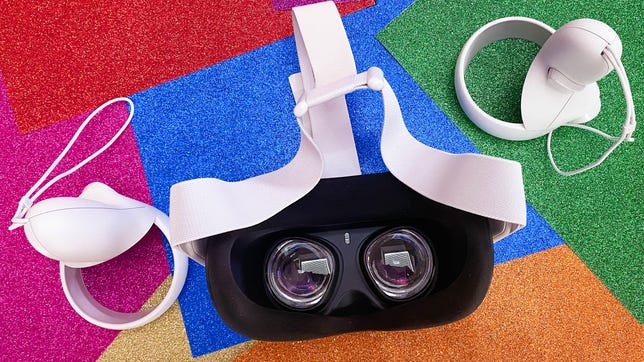Editor’s note, Aug. 12: The Quest 2 increased in price Aug. 1 by $101. That makes it less of an impulse purchase, but still a CNET Editors’ Choice for now. Below is our updated review.
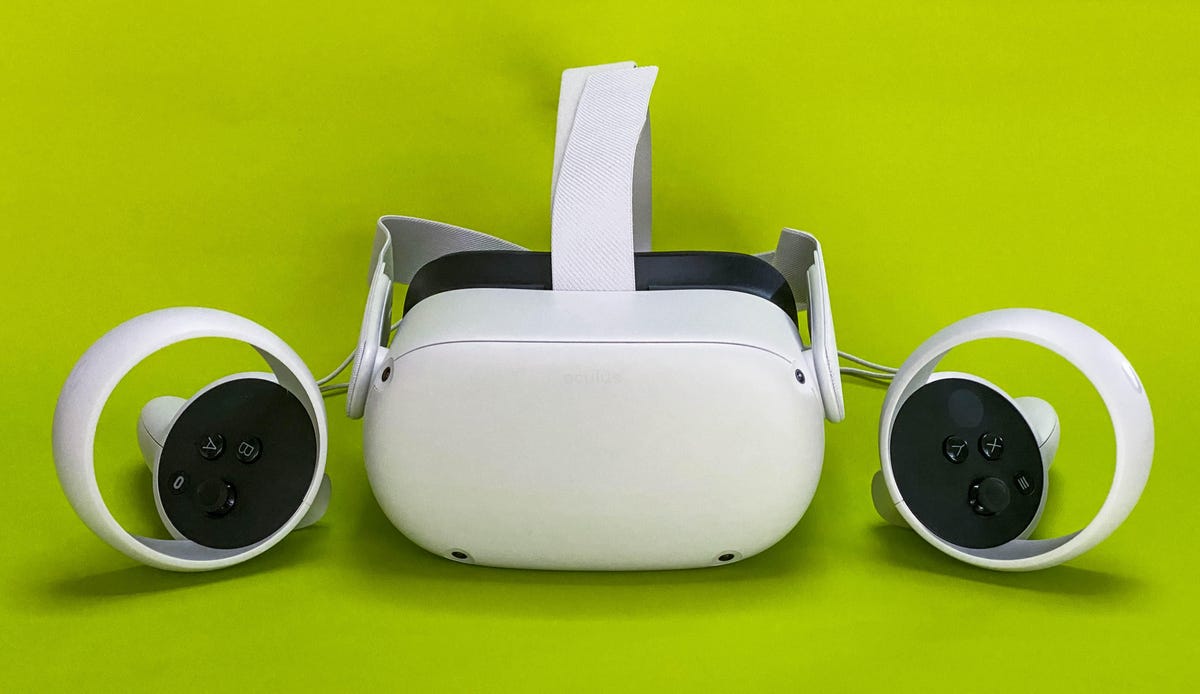
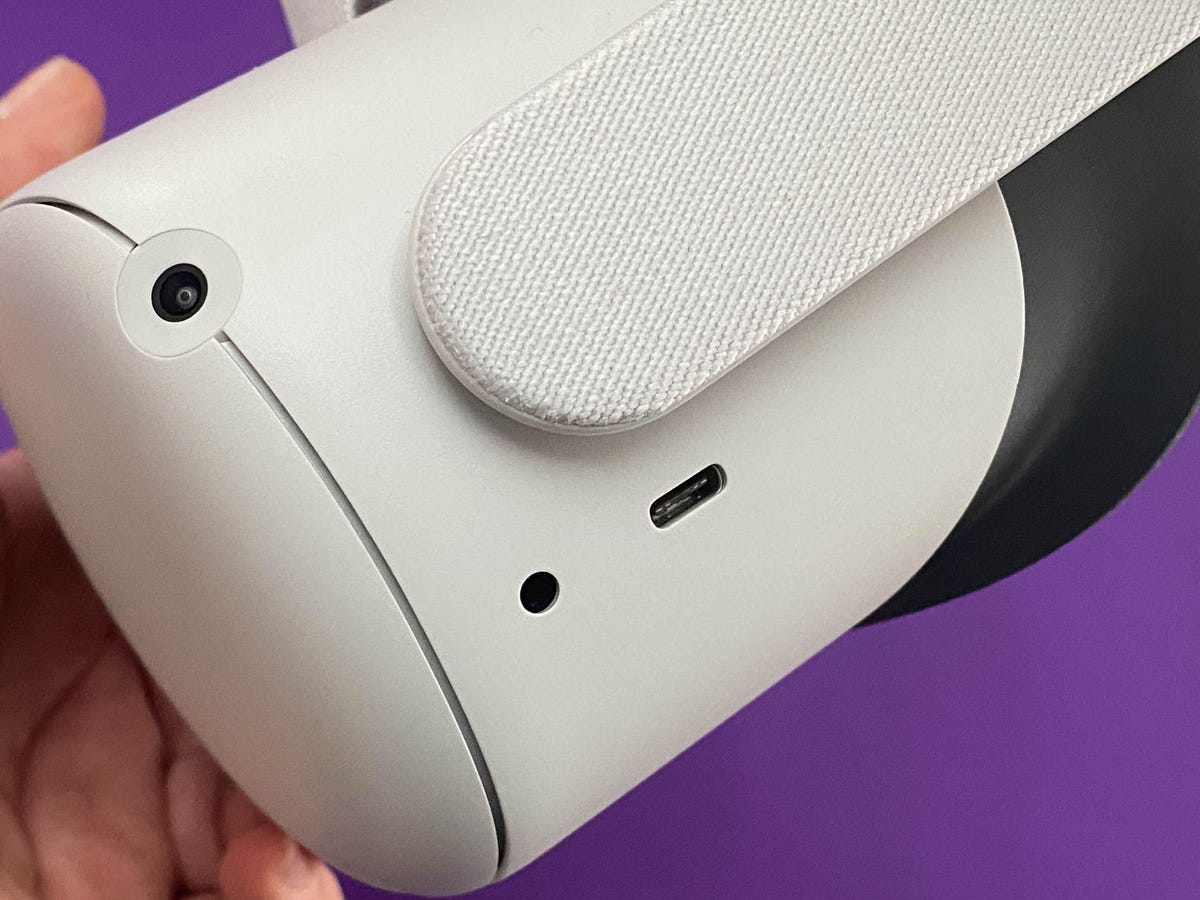
Built-in audio pumps up from right behind those straps, but there’s also a headphone jack.
Built-in audio doesn’t need headphones: The ambient spatial audio that comes out of the side straps is fine, and I prefer it to using headphones. It sounds a bit better to me than the first Quest. There’s also a 3.5mm headphone jack.
The XR2 chip looks pretty versatile, still: Qualcomm’s XR2 chip remains the best standalone processor for VR at the moment, and VR graphics on recent games have been pretty impressive. The Quest 2 can also handle hand tracking and mixed reality by overlaying virtual objects with its black and white passthrough cameras.
The refresh rate is smooth:The first Quest could run at 72Hz, a bit less than PC VR headsets that can go to 90Hz. The faster the refresh rate, the smoother the experience. The Quest 2 can even do 120Hz for some games and apps.
The size and weight aren’t bad: The Quest 2, at 17.7 ounces, or 503 grams, is not super light, but it’s still pretty portable for a self-contained headset. It’s still a pair of goggles, but it’s possible to carry it around. The elastic flex straps are easy to pack down, too, although the Quest 2 still isn’t as portable as an iPad or a Nintendo Switch.
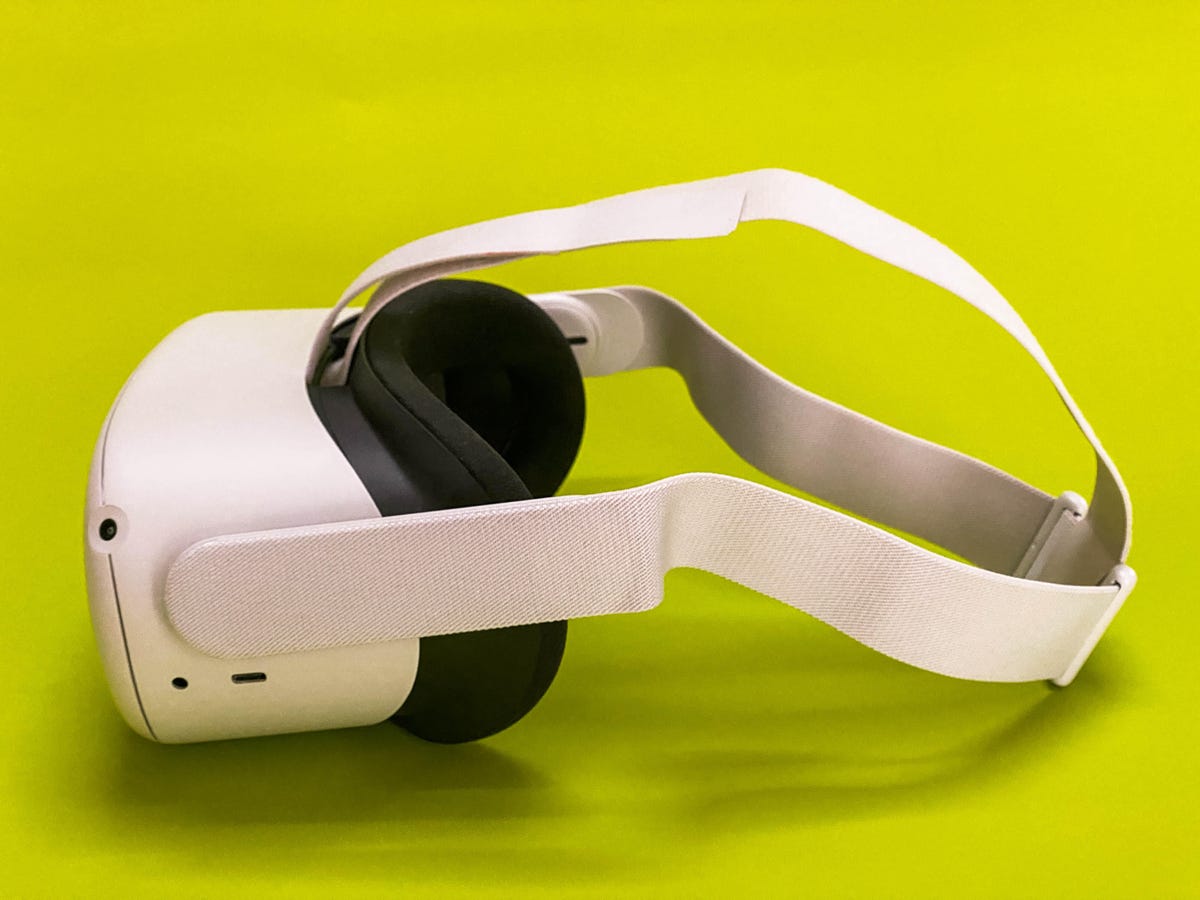
The elastic straps are more compact now, but sometimes not as comfy.
What’s a bit of a letdown
It’s not as friendly to my larger glasses: The eye area on the new Quest is a bit smaller, and the included foam padding feels firmer and cushier. But my glasses now seem a bit more jammed in than on the older Quest. Meta sells a fit pack ($50) with a few different snap-out foam frames for different face types, so maybe I need one of those.
It takes a long time to recharge:The headset lasts two to three hours, which is like the last Quest. I find battery life can run down in just one evening, and then I need to recharge. And recharging takes a long time — an hour or more, which means you’ll need to take a VR break whether you like it or not. Meta does sell an Elite Strap with an extra battery pack, plus a helpful case, which helped my longer-term play sessions a lot.
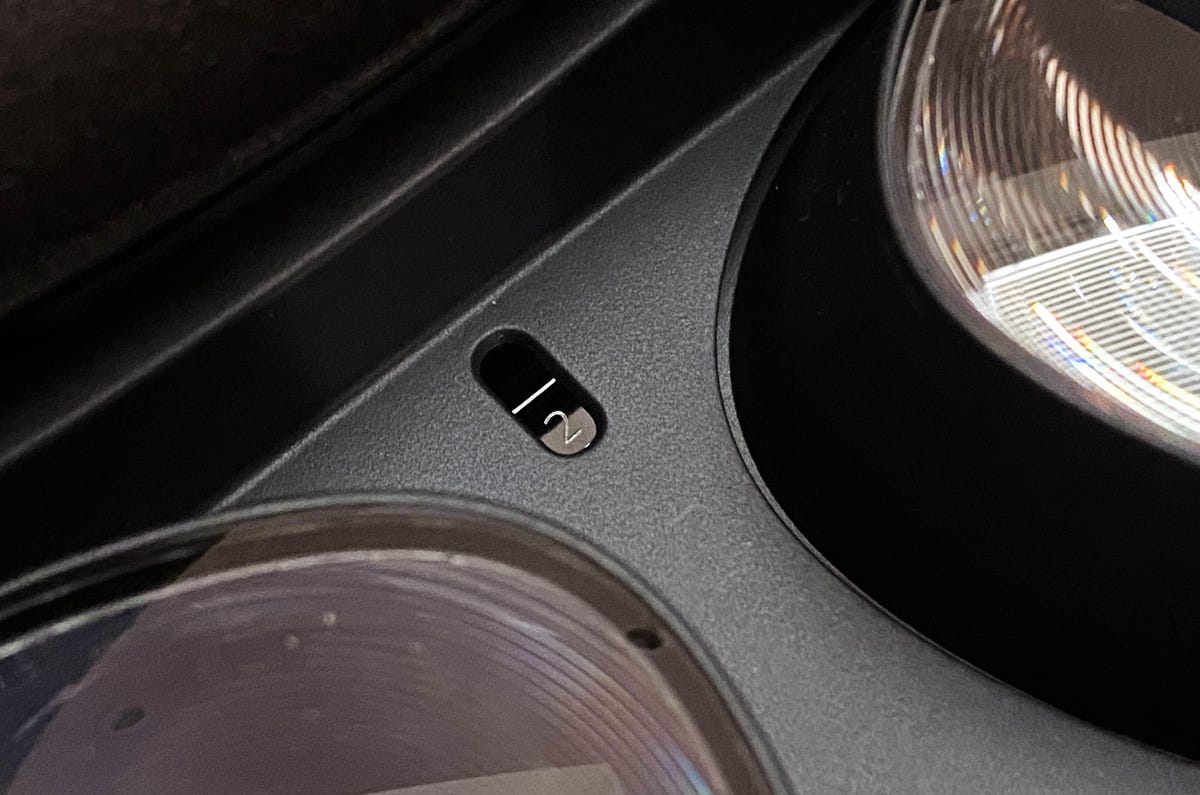
IPD adjustment is one of three fixed settings.
IPD adjustment for my eyes was a bit of a learning process:The older Quest fit my eyes perfectly, and also had an interpupillary distance slider to fit eye distances for nearly anyone. The Quest 2 replaces the slider with three preset eye distance settings (53, 63 and 68mm) that are meant to fit most people, but at first my vision didn’t feel 100% with any of them. Over time, I readjusted the straps to my head and started to get better results. I also have thick prescription glasses, FYI.
You can’t really use it in sunlight: The Oculus Quest 2 is like a vampire — keep it indoors. Direct sunlight can cause permanent damage to the displays if beams go through the inner lenses, and when I played outside, the headset tracking had some trouble finding the controllers. It’s a reminder that VR headsets still aren’t everyday take-absolutely-anywhere things quite yet, though I’ve done some outdoorsy experiments from time to time.
A possible magic doorway to more, but what happens next with Meta?
Meta’s road to the future is set toward augmented-reality smart glasses that can blend the virtual and real, but that could still be years off. In the meantime, the Quest 2 could have enough onboard power to evolve new ideas for the company’s immersive work. Its pro-level headset, Project Cambria, should introduce better controllers, more mixed reality, eye and face tracking, and a better display. It could be another bridge to where Meta’s AR ambitions lie, but at a much higher price. The Quest 2, meanwhile, could hang on as a more “budget” device for everyone else.
Besides whatever concerns about Facebook and data you may have, there’s also the question of how open Meta will allow its VR universe to be. While the Quest connects easily with PCs, what about the future of phones? How will the Quest dovetail with the apps we use every day? Right now, it doesn’t. Mark Zuckerberg keeps pledging that the Quest’s future will be open. But the future ahead will be about phones and tablets that plug into VR and AR, and the Quest needs to find a way to be part of that future, too.
For now, the Quest 2 remains a memorable VR and experiential headset, and the best self-contained device VR has ever had. The only question is how much better it can get.
First published Sept. 16, 2020.
